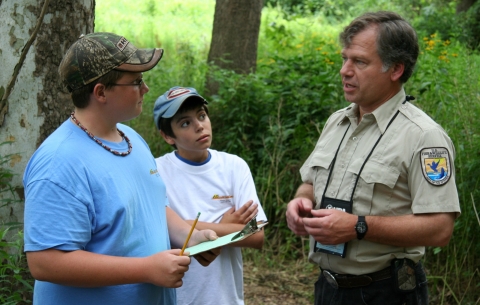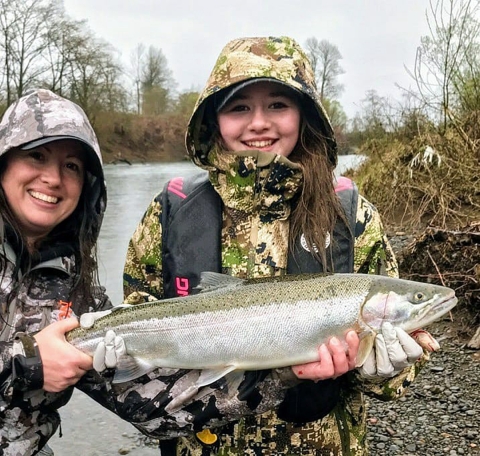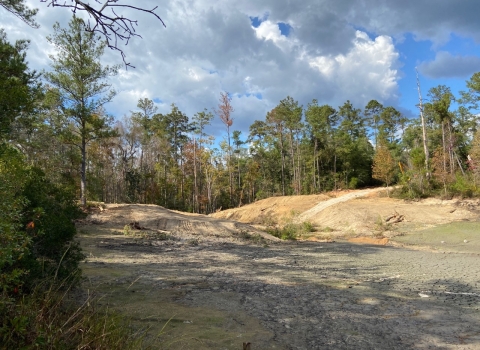“Hunting is stupid.” That’s what my friend’s 10-year old son said, and his 8-year old brother agreed whole-heartedly. This shocked me because my friend was an avid hunter. He was avid about big game, upland birds, waterfowl …everything! Like me, he was a wildlife biologist and appreciated the outdoors in many ways. My son was about 9 years old, loved shooting his bow and arrow, and could not wait to go through hunter education. Why the difference?
Now, more than ever, agencies and hunting organizations recognize the importance of the 3 R’s (recruitment, retention and re-involvement) regarding hunters and the support they bring to conservation. With all of the other interests in this world, such as video games and organized youth sports, exposing children to outdoor recreation at a young age is more likely to result in a lasting interest. We live in a world of changing demographics and values. Many children are raised in urban single-parent households and our families are geographically spread apart more than ever. Traditionally, older family members served as mentors to young hunters. While there is still a need for mentors, the role of nontraditional mentors is increasing.
It is important to properly introduce all young hunters to the sport, but for the nontraditional mentor there are also other considerations, including building trust. Poor mentoring can turn off a student for life. I think many of us have heard the stories of young people learning to shoot for the first time where they were handed a large caliber rifle without much warning. The result from the unexpected kick is often a sore shoulder and a bruised ego, or even a long-lasting fear of firearms. Whether that was a joke or just not thinking things through, there is a better way.
My friend took his sons along while he hunted long days in blizzard conditions — even their dog wanted to go home. My son’s first exposures to “hunting” were actually hikes or scouting trips on nice sunny days for a few hours. We spent more time sitting, snacking and watching wildlife than we did walking. It’s a lot of fun to eat chocolate-covered raisins while examining deer droppings.
The way I approached teaching my son about hunting was actually first informed by a pamphlet I read about introducing kids to fishing. Here are some of the principles that I have put into practice while teaching hunter education for about 20 years and mentoring a number of young hunters on their first hunts:
It is important to start with right attitude and goal. This effort is about the student and therefore their experience is what matters. It may be best to do your serious hunting on your own so you can better focus on the student’s needs when they are with you. The goal should not be your success in harvest, but the student’s successful experience. This begins by remembering your primary goals are safety, learning and fun. Consider the student’s age and abilities and manage their expectations. If you are investing in their education, you may want to give them some gear of their own, such as a call or a pack. Learning to call is a fun activity that can be done before going into the field. Remember to build trust by being on time and following through with promises. Set small goals that are achievable, such as watching wildlife or observing their habitats/sign.
Tailor the activities and preparation for the student. One of the young people whom I helped harvest their first deer was, even as a youth, a world-class competitive marksman; so there was little reason to spend much time at the range. For others, it may be important to start at the very beginning. Keep it simple and fun. Keeping lessons/outings short and positive will keep the attention of younger students. It is more fun to learn by doing than just watching or being told. While in the field or doing fun activities, pass on information about animals and their behaviors and habitats, principles and history of conservation, and ethics. For inexperienced students, do not forget to teach them about basics (dressing for weather, how to use binoculars, etc.). Be sure to not ‘over-do it’ — multiple short sessions will work better for some students. Fishing is also a great way to get kids interested in being outdoors.
Take trips into the field or on the water. Plan your trips to meet the student’s needs. Practice trips prior to hunting can help the student get used to the logistics so they will not be overwhelmed on their first hunt or tag-a-long. Young students will need all your attention so you may have to take them one at a time. Keeping them involved will make the trip more fun. Let them practice on a call or let them carry a toy gun — a great way to start learning muzzle control. Go slow, pick an easy outing. Stay comfortable — bring the proper clothing, snacks and drinks, and something to sit on. Emphasize safety and point out their progress and successes.
When the first hunt arrives, continue to apply these principles. Give the student their best chance at success. Harvesting an animal can add to the fun. Pick game animals and situations where harvest is more likely. Many State wildlife agencies have special rules or seasons for youth. If there is an area where youth can harvest antlerless deer, this will likely increase their chance of success as well as make the hunt easier.
Has the student seen a dead animal or participated in the preparation of a game animal for food? Hopefully by this time, they have. In some cases, it may be better to start some youth on fishing and/or small game hunting prior to larger game hunting. Each child is different in terms of how they view animals and death, and it is their feelings that are important — not how you want them to feel. It may also be helpful to involve them in processing wild game that you have harvested before they actually go hunting — that way you can determine if they are interested and curious about the process. If wild game is not available, you can involve them in processing farm animals such as chickens, rabbits, or goats. Remember, you must teach at their pace — if you force them, they will lose interest.
If you focus on a few principles and the student’s needs, you can stay safe, have fun and achieve success — recruiting a safe, ethical, and enthusiastic hunter into our conservation community.
Happy hunting!





